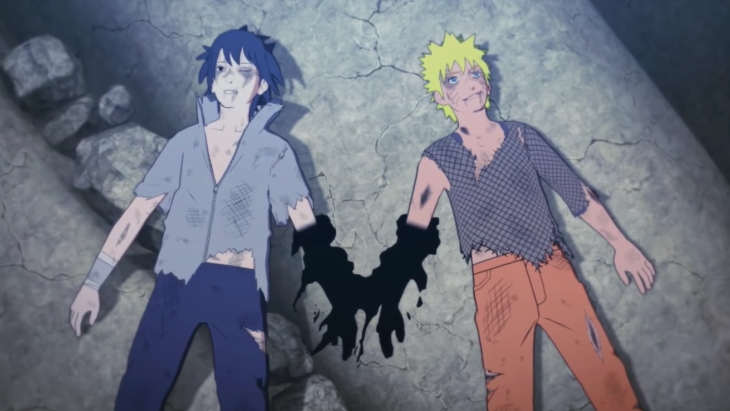
CyberConnect2’s president has claimed Sony Interactive Entertainment (SIE) have policies against depicting dismemberment or missing limbs for Japanese developers.
Hiroshi Matsuyama- also the CEO of CyberConnect2- discussed Demon Slayer: Kimetsu no Yaiba Hinokami Keppuutan during an online Q&A session; and was reported by Game Spark (translation: DeepL).
Matsuyama was asked how the game would handle its depictions of bloodshed and dismemberment; both present in the original manga and anime. Matsuyama claims that there was a “regulatory decision regarding the expression of missing limbs;” using several licenced Shonen Jump titles as examples.
Game Spark reports that developers aim for a specific age ranger under Japan’s CERO rating system, but from there can adapt it further based on policies for the platform manufacturer; such as Nintendo for the Nintendo Switch, or SIE for PlayStation 4 and 5.
Noted examples of censorship in Japan for CyberConnect2 include characters with missing limbs having regained them; such as Minato Namikaze in the Naruto Shippuden: Ultimate Ninja Storm series.
In Naruto Shippuden: Ultimate Ninja Storm 4, Naruto and Sasuke are depicted with blackened arms, rather than lost ones. Depictions of blood were also removed compared to scenes in the manga and anime; and this change occurred in all versions of the game.
Matsuyama states “Yes. This is because the loss of limbs in characters that look human is prohibited by SIE, not CERO. Even if Minato Namikaze is a corpse resurrected by unholy reincarnation, if it looks human, it’s out.”
However, there are other examples with similar games where that has not occurred. The example given was with Dragon Ball Z: Kakarot, where Nappa cuts off Tien Shinhan’s arm remains. Matsuyama explains this was approved by SIE, and speculated it was because of “the difference in impressions between Dragon Ball and Naruto” and “the changing times.”
The move may be surprising considering other games on modern PlayStation consoles. The Last of Us Part II has depictions of dismemberment and other gruesome deaths, and Resident Evil 2 features two different versions (CERO D and Z). Even the 18+ CERO Z rated version has some gore censored.
CERO; as with other nation rating systems, have rules and regulations that can mean certain content will have a piece of media refused classification (thereby banning it from sale), or given a rating that would do so. This is likely due to the Kobe child murders of 1997, where one victim was found mutilated and beheaded in front of his school’s gates.
The aftermath of this resulted in politicians calling for more regulation against depictions of graphic violence, blaming US horror films. During their investigations, police created a list of Hollywood horror films that featured content resembling the real life murder, and created a lust of customers who rented those films from rental stores in Kobe.
This also resulted in censorship for the Japanese release of Crash Bandicoot 2: Cortex Strikes Back, launching that same year. One of Crash’s death animations when crushed has him reduced to a head and feet that waddle away. Due to the Kobe child murderer reportedly leaving his first victim’s head on a pair of shoes, this was changed to the model being made entirely flat (though still moving around).
Other prolific murder cases in Japan have also had video games, anime, and/or manga blamed for motivating the killer; such as serial killer Tsutomu Miyazaki, serial killer Takahiro Shiraishi, the “Sasebo slashing” murder, spree killer Masahiro Kanagawa, and the Akihabara massacre.
Dismemberment being censored in Japanese releases include of The Last of Us, No More Heroes, and No More Heroes 2: Desperate Struggle. There was also the removal of blood or gore from Resistance: Fall of Man, Uncharted: Drake’s Fortune, The Witcher 3: Wild Hunt.
As several of the above games are not exclusively on PlayStation platforms, it cannot be certain whether Nintendo and Microsoft have similar policies in Japan, or when CERO have demanded censorship in order for a game to reach the developer or publisher’s aimed rating.
It should be noted in March 2019, Oxford University released a “definitive” study, declaring “no link” between violent video games, and violent tendencies in teenagers. The report aligns with the findings of several other studies already conducted before [1, 2, 3, 4, 5, 6, 7].
Some may compare this to the recent spate of censorship of sexual content of anime-styled games on PlayStation platforms; while such depictions are left untouched when the characters are in a more realistic art-style. Typically this difference occurs in Japanese and western developed games.
In late December 2018, SIE Japan Asia President Atsushi Morita stated the then recent spate of censorship of anime-styled sexual content on PlayStation 4 games had been “to meet global standards.” This censorship was seemingly forced in Japan.
SIE frequently cites global and community standards as reasons for their censorship practices. This has led to Japanese developers to release on other platforms, or create different versions.
This was the case with D3’s “Breast-Expansion Dungeon RPG“ Omega Labyrinth Life, which was released uncensored on the Nintendo Switch at launch. A censored version for the PlayStation 4 titled Labyrinth Life (omitting the “Omega” which is stylized as a busty girl in the logo) was released also at a reduced price to reflect the cut content.
The “restrictions on expression and suppressed the release of titles for Japanese users” was also cited by an analyst for the Ace Research Institute; claiming that it is “definitive” PlayStation will fall in Japan. He also claimed SIE were not realizing the region’s potential.
As seen with Naruto Shippuden: Ultimate Ninja Storm 4, this censorship intended for Japan can occur internationally. Will this extend to games with older age ratings, or if a similar act of violence that becomes well-known occurs in the west? What do you think? Sound off in the comments below!
Image: Naruto Shippuden: Ultimate Ninja Storm 4 via YouTube
